Now the Turner prize has gone, and we have our gallery back. Still not free of the corrosive Arts Council social work arts programme, but ignore the excrescence on the ground floor, despite its claim using the Bayeux Tapestry to justify the size of its awfulness. No, bypass it and head for the stairs leaving the bleak new coffee shop behind you, by-passing the expensive restaurant and go straight to the top floor spaces which are filled with subtle, gentle, painterly works by Emma Stibbon.
I wish curators would not drag in random fairy tales in writing about artists work, but this is presented as about global warming and rising seas. In that context they should read some of the words at Birling Gap visitor centre where it records that the coastline was probably 2 kilometres further out than now some thousand years ago. Perhaps they should note too that the beach at Dungeness which apparently is now 200 feet further out to sea thanks to the progression of pebbles from South Coast beaches due to the drift imparted by currents.
As for melting ice caps it seems that there are fears that the southern ice cap is expanding and getting colder, whilst ice depth variation on the northern cap is much in line with normal variations. Can we forget the paranoia and the ever-crumbling chalk under the impact of gales and the decay of our sea defences (recorded in my own paintings and photography over the last ten years), and just enjoy the subtle beauty of art without the guilt trip? As an approach it mirrors the self-righteous moral arguments about Eric Gill’s sexuality, or the correctness of Rodin’s relationship with his models and the impact of artists behaviours on appreciation of their art.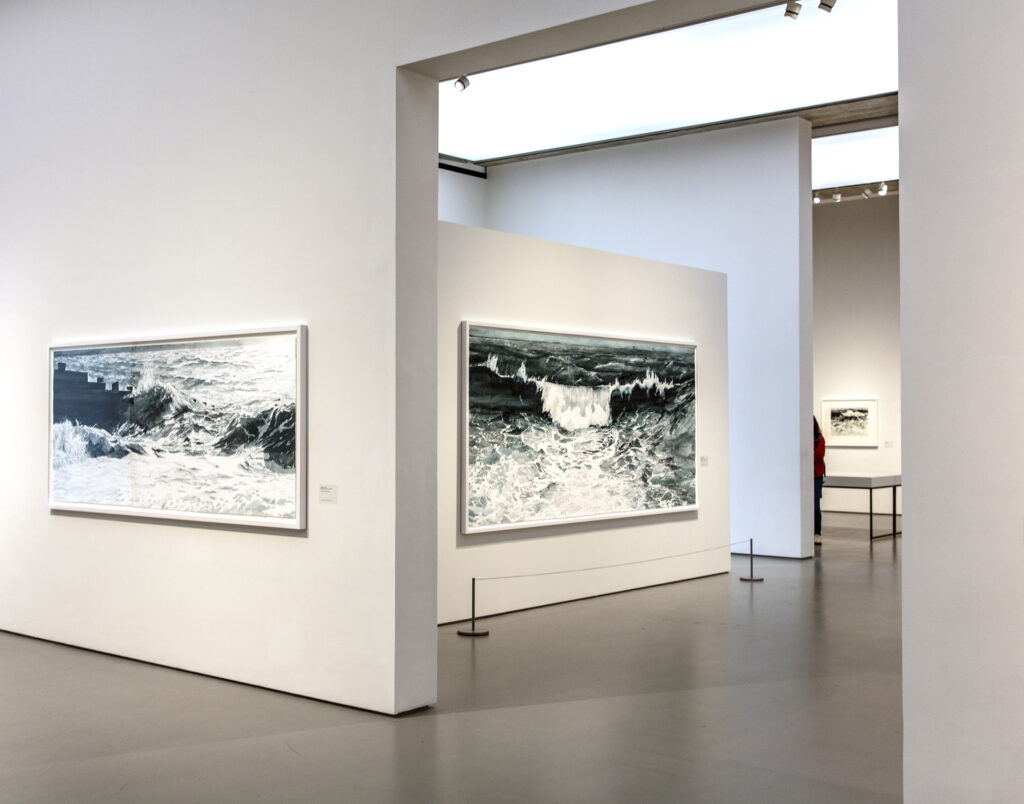
Emma Stibbon has visited the icefields to photograph and paint from observation of the ice. Yet some of the most beautiful works in this show (and there are plenty to enjoy) are the small chalk drawings evoking places along the local coast in moonlight such as this image of Birling Gap. Made using crushed chalk from the beaches on paper prepared with a black coating/wash, they are quite magical (maybe unintentional?) evocation of the coast by moonlight.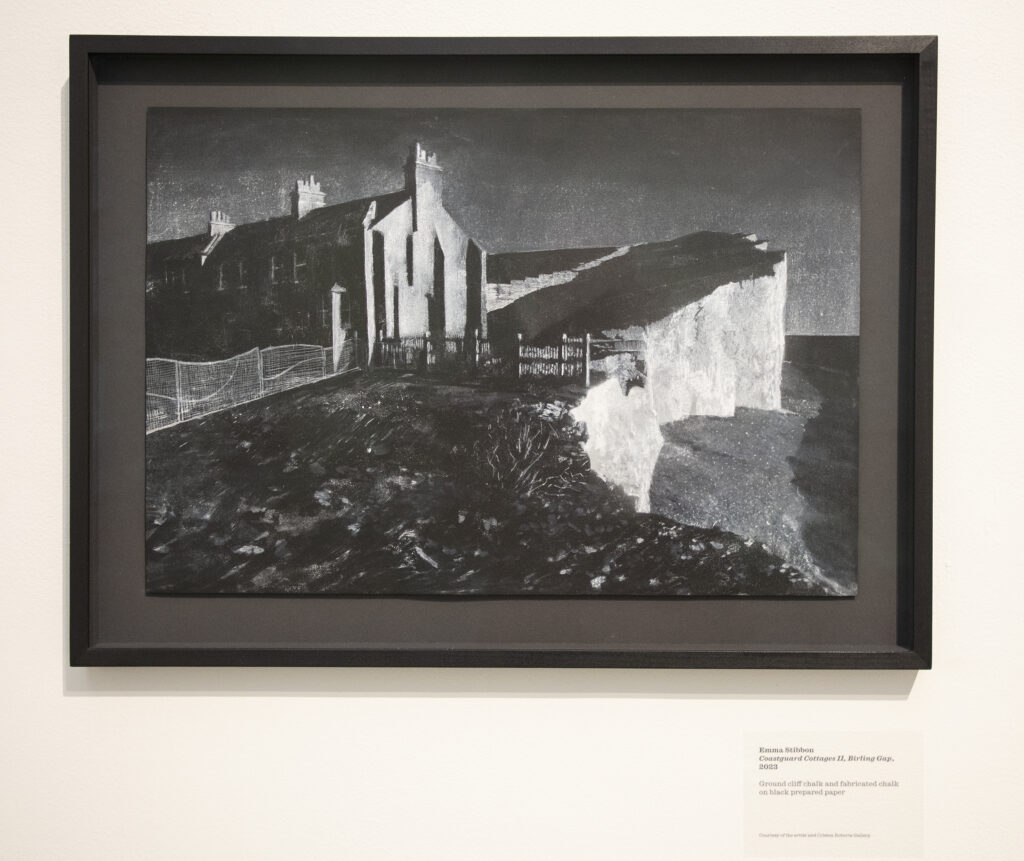
My own work tiptoes on the edges of abstraction and it is interesting to compare some of my photo interpretations of the same scenes Emma so masterfully portrays in her work. I say masterfully but the gentleness of these works somehow gives them a delightful feminine quality to me, evoking much admiration for the subtlety and skill the artist has.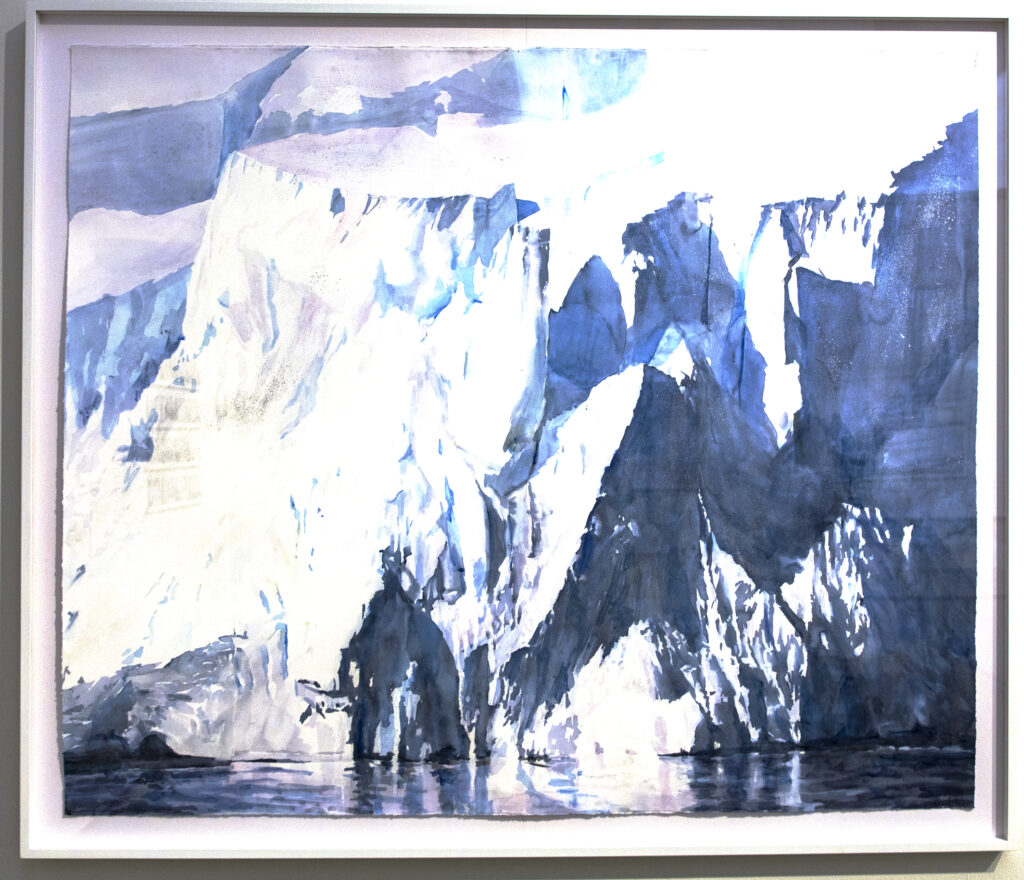
The gallery displays the larger works beautifully and on a quiet early weekday morning visit I was able to stand an immerse myself in contemplation of the large pieces in the largely empty galleries. Whilst the large water colours of the bergs exude gentle beauty and great skill in their use of water colour for me the vibrant strength of the drawing of breaking waves excited the most. The cool of their observation still allowed the expressive intensity of the movement of her hand in drawing and painting the images, and their scale was wholly appropriate to the subject – large enough o command the wall space without being so big as to dominate the viewer.
The wave breaking on the steps at Hope Cove is a reminder that like the stairs at Birling Gap the works of man also have to resist the sea. Unfortunately, unlike Birling Gap, no-one wants to pay to reopen the stairs, basically barely maintained since installation at the beginning of the 20th century. The images may be some of the last to be made of this part of the coast, the disappearance having nothing to do with anything other than man’s neglect, which is the case with so much of our coastal erosion in the face of the forces of nature.
Another exhibit did dominate – a large image, familiar to many of us who regularly witness the cliff falls along our coast, of a section of the cliff with the collapsed chalk spread across the floor in front of the image. “How did they get all that chalk here?” I thought but a tap of the knuckles revealed their artifice so nicely done – just a bit too clean…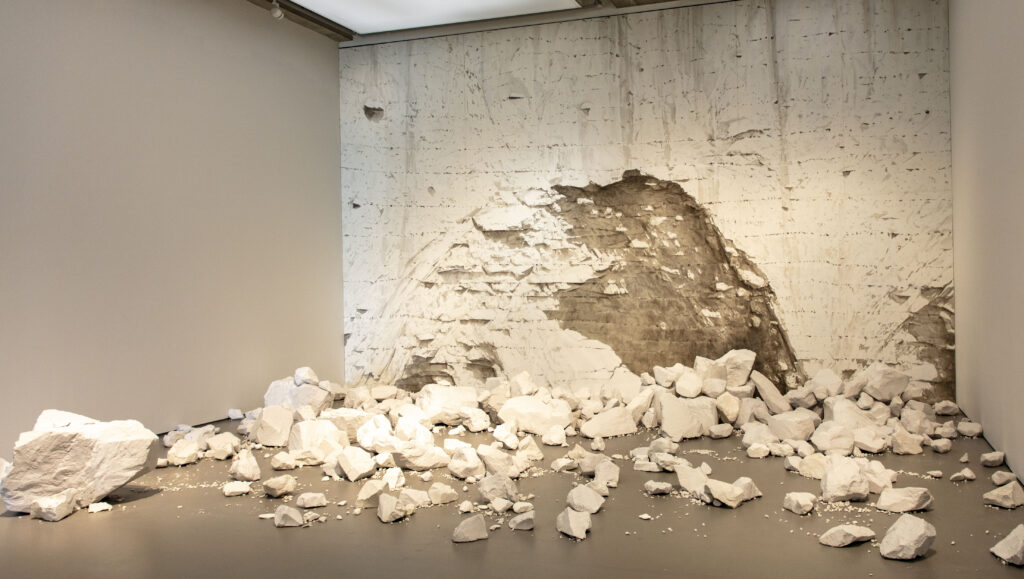
The paintings of the ice fields have an ethereal ‘otherness’ emphasised by the subtle gentle handling of media, unusually large landscape water colours. Having been to North Cape in the winter snows the paintings summon back that cold chill stillness and beauty of the arctic environment whilst remaining emotionally warm. Lovely evocative large scale work.
This is a stunning show, and the work makes an interesting contrast with the work of Merlyn Chesterman and her woodcuts of the granite coast of Devon. It has been said for many years that England is sinking in the south whilst the north of Scotland is rising gently. We used to be linked to the Continent so that one could walk from Newhaven to Dieppe. Now we take a ferry across the busiest sea lane in the world. Change always happens it is one of life’s constants. This show clearly shows the beauty of our world. Nothing will change tomorrow except it might rain. Or it might not. Go to the show. Leave your fears outside. Just take pleasure in seeing the work of a consummate master of her art producing artwork that rewards contemplation with its subtlety and gentleness.
For the Towner, a show that betters three of the four Turner prize exhibitions by a country mile.
Lovely work from Emma Stibbon, great choice by Joe Hill and the team at the Towner. It’s on until 15th September, go and enjoy

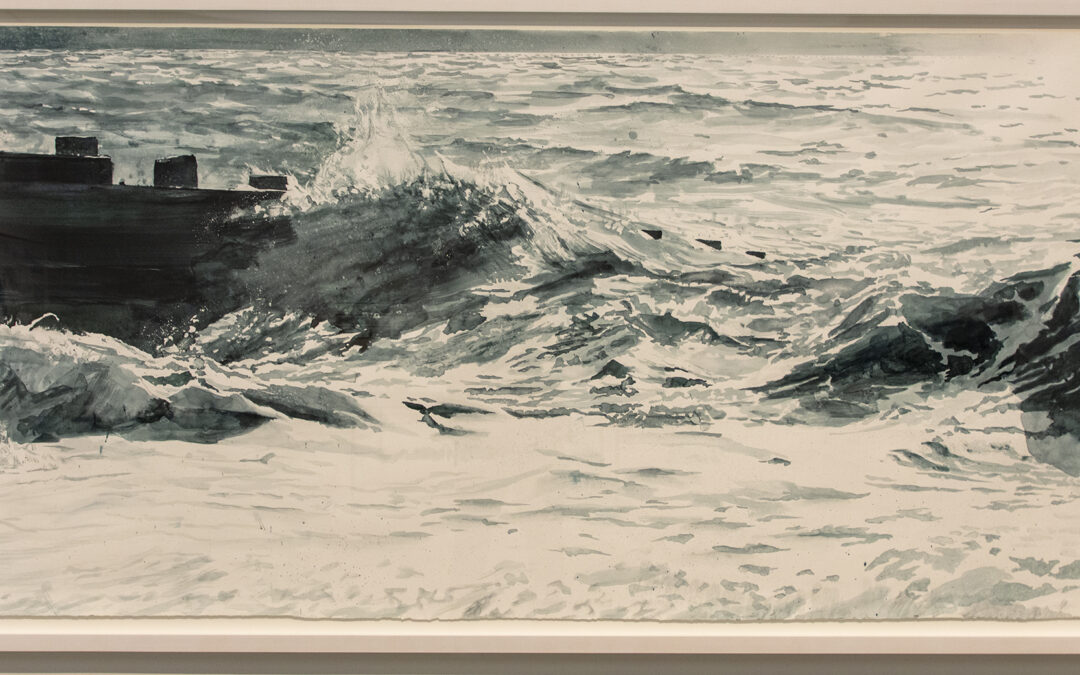
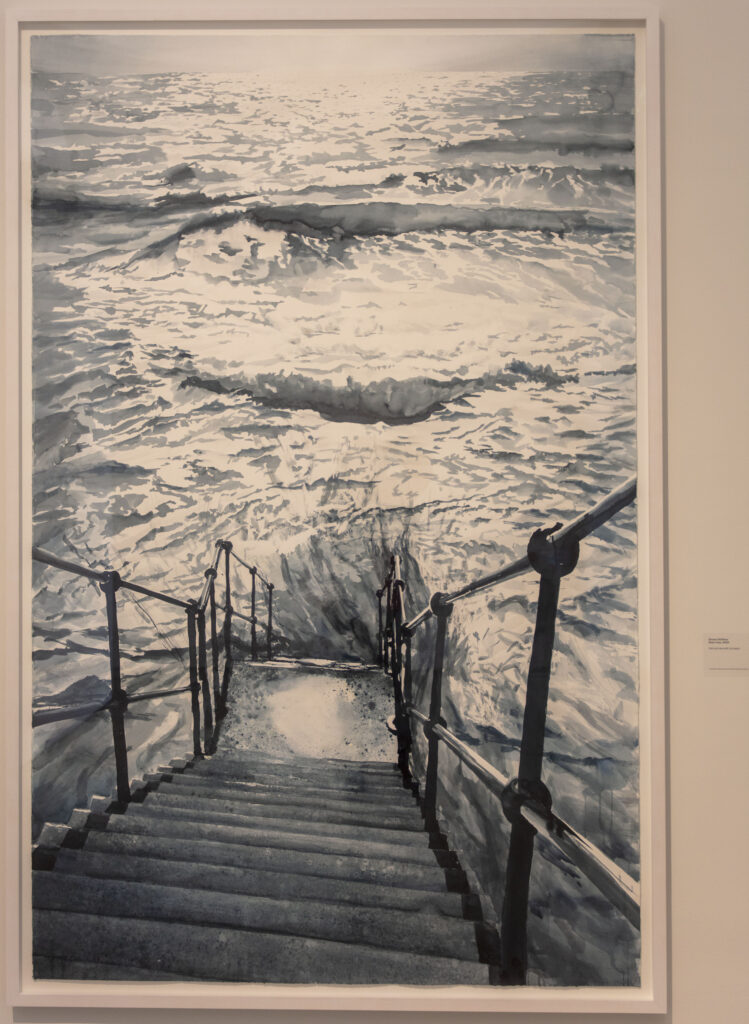
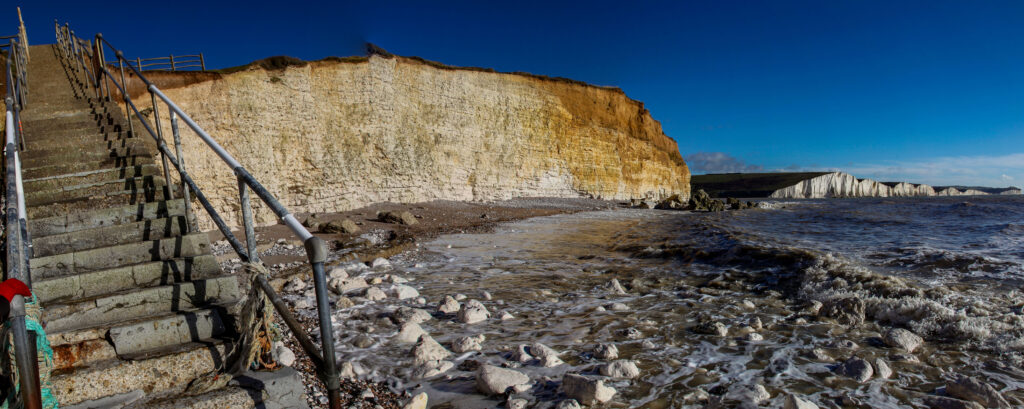
Recent Comments